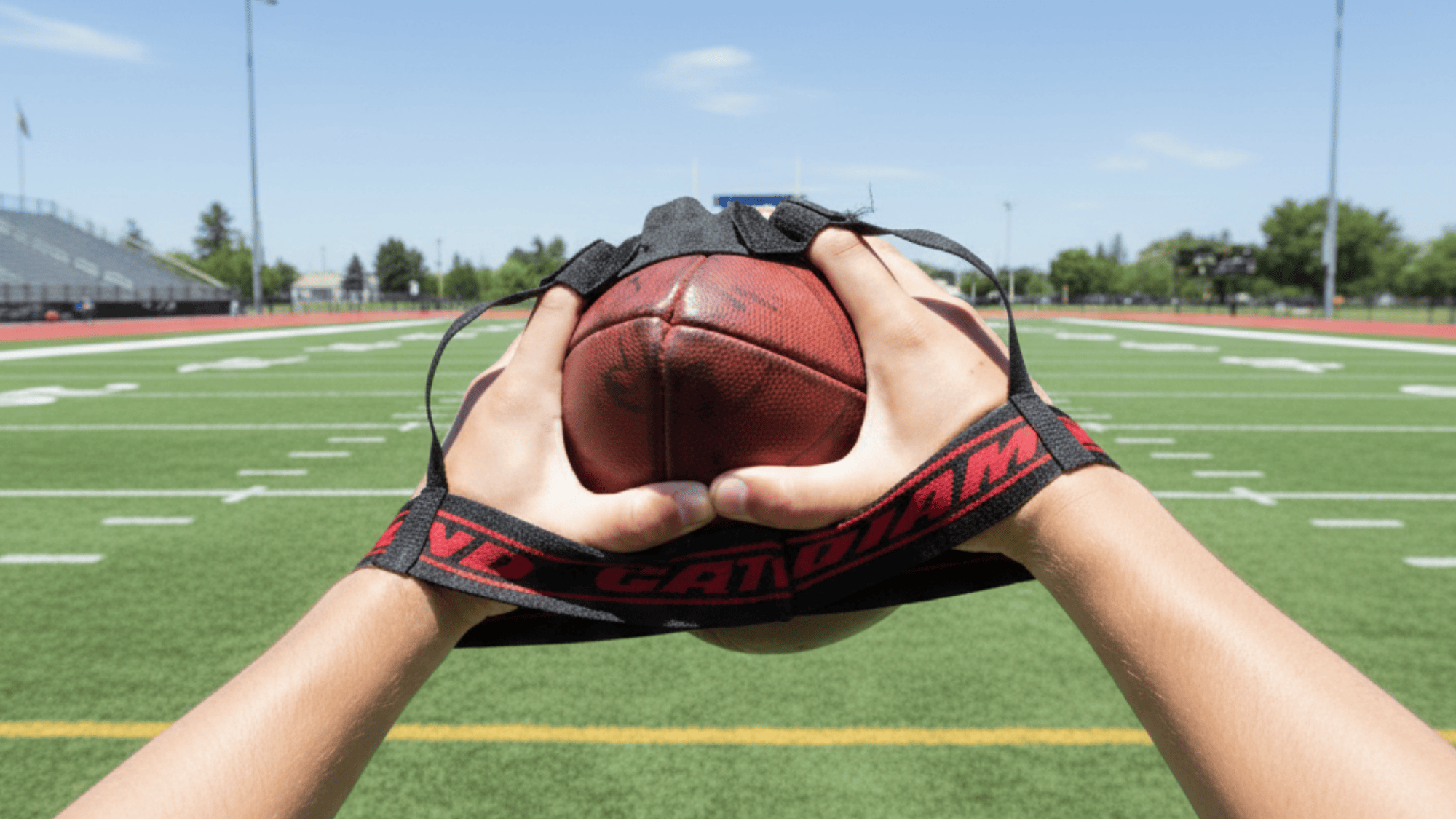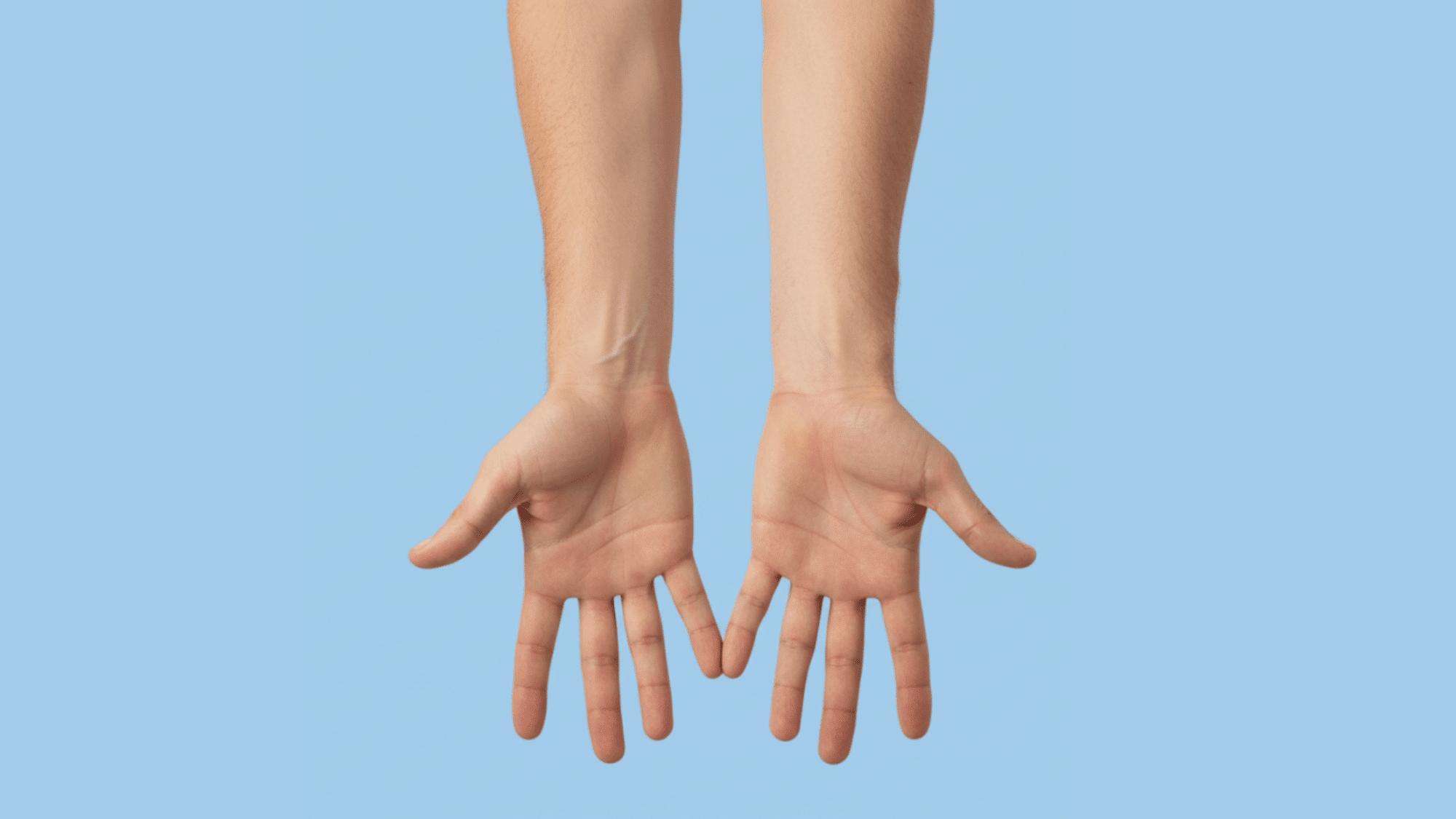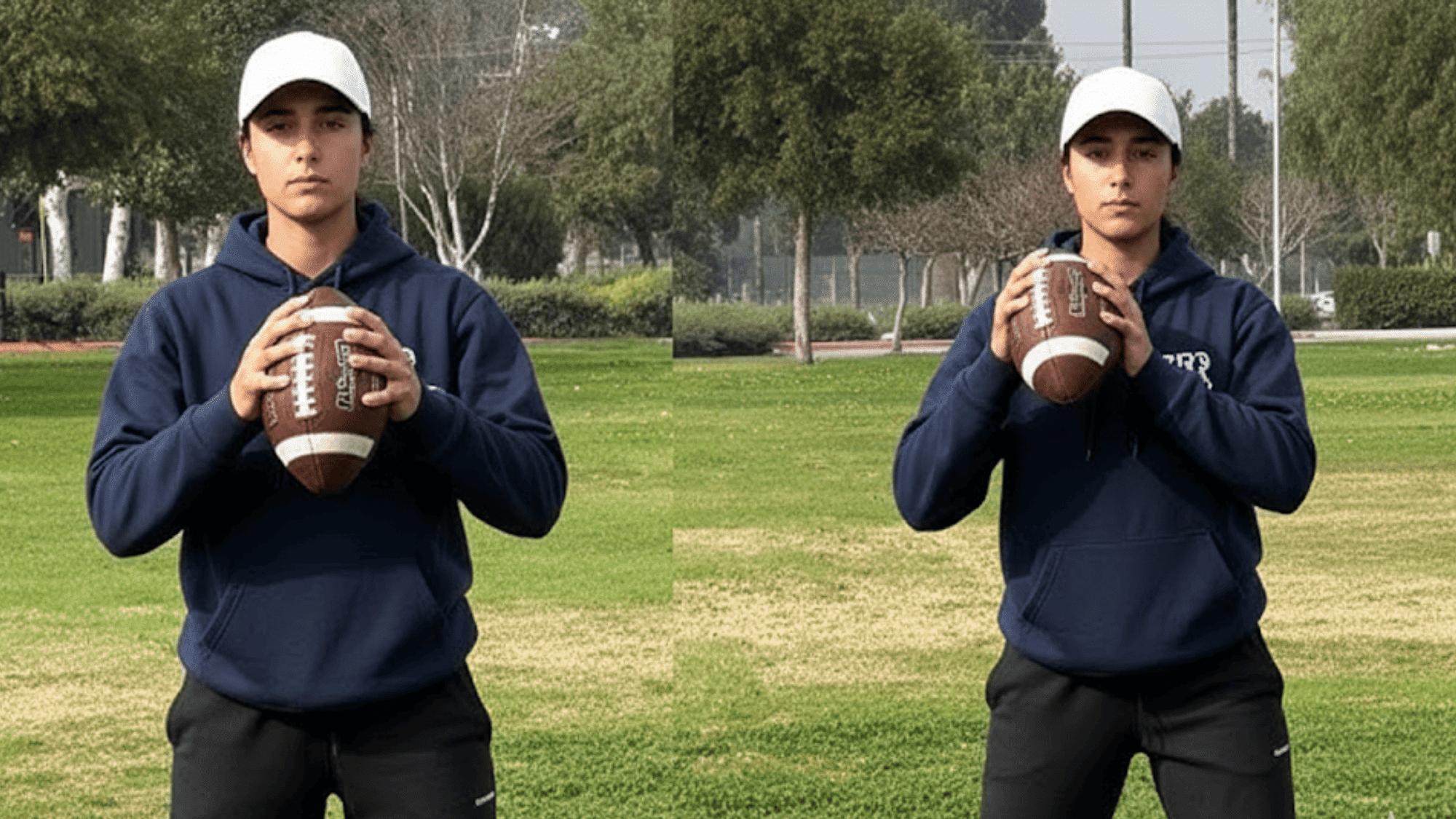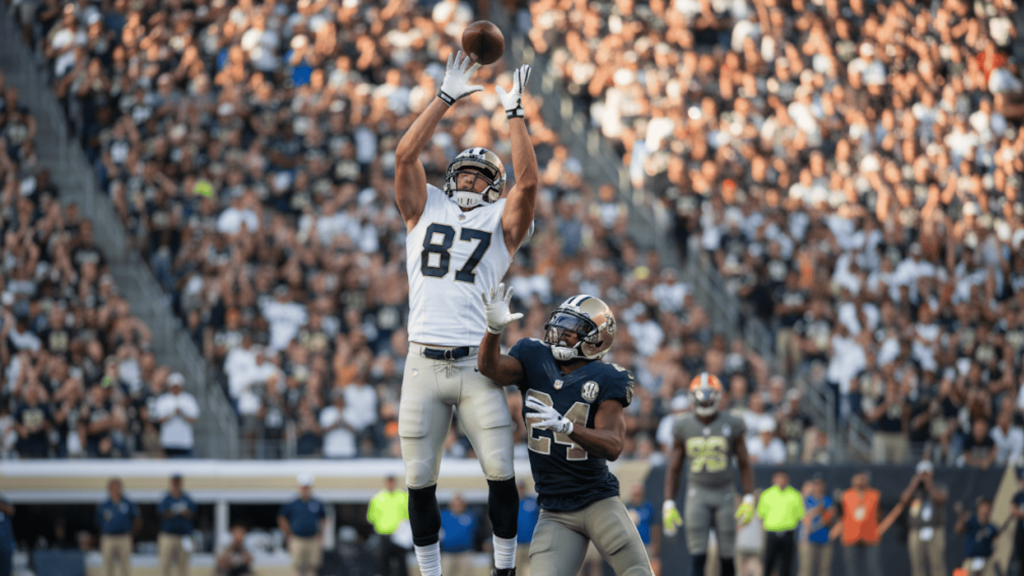Catching a football looks easy when you watch the pros on TV, but try it yourself, and you’ll quickly realize it’s a lot trickier.
The ball spins fast, defenders are in your way, and sometimes it feels like your hands just aren’t cooperating. If you’ve ever dropped a pass and felt like you had “butter fingers,” don’t worry, you’re not alone.
The good news? With the right techniques and a little practice, anyone can learn how to catch a football better.
In this blog, we’ll cover important catching techniques, hand positioning, grip tips, body control, focus drills, and common mistakes, everything you need to build confidence and consistency.
Why Catching a Football Matters
Catching isn’t just about snagging highlight-reel passes. It’s a core skill that makes you more confident on the field. Here’s why it matters:
- It Keeps Drives Alive: Dropped passes can end plays and cost your team momentum.
- It Builds Trust with Teammates: Quarterbacks want to throw to reliable receivers.
- It Makes the Game Fun: Few things feel better than making a clean catch and turning upfield.
Even if you’re new to football, improving your catching will instantly raise your game.
The Basics: Correct Hand Positioning
One of the first things coaches teach is that you don’t catch with your palms, you catch with your fingers. Palms are too flat and stiff, which makes the ball bounce off. Fingers give you control.
Here are two must-know positions:
The Diamond Shape (High Passes)

The diamond catch is your go-to for balls coming in high. By pressing your thumbs and index fingers together, you create a secure “window” that guides the ball in.
Keep your elbows slightly bent and hands soft; this helps absorb the impact and prevents the ball from bouncing out.
The Pinky Catch (Low Passes)

When the ball dips low, the pinky catch is key. Point your fingers downward and connect your pinkies to form a small basket.
This scooping motion provides stability while allowing the ball to settle smoothly into your hands. Staying low with bent knees adds extra control and balance during the catch.
Keep your hands relaxed but ready. Players call this having “soft hands.” If your arms are stiff like rocks, the ball is more likely to bounce out.
Eyes on the Ball: Improving Focus
You’ve probably heard the phrase “watch the ball all the way in.” It sounds simple, but most drops happen because players look away too soon. Maybe you’re already thinking about running or worried about a defender.
To fix this:
- Track the Nose of The Ball: Follow its spin until it hits your hands.
- Don’t Peek at Defenders: Trust your body to protect you.
- Mentally Slow Down: Remind yourself that the catch comes before the run.
Practice this by tossing the ball in the air and catching it while keeping your eyes locked on it until it’s fully secured.
Grip Techniques to Prevent Drops
A strong grip can make the difference between holding on and fumbling. Here’s what helps:
- Fingers, Not Palms: Always use your fingertips to absorb the ball’s spin and control its movement. Palms are too flat and stiff, which makes passes harder to secure.
- Firm but Not Tense: Hold the ball like you would an egg. Squeeze firmly enough for control, but stay relaxed. Too tight or too loose leads to drops.
- Football Gloves: Quality gloves add tackiness and extra grip, especially in cold or wet games. They help beginners gain confidence, though technique matters more than gear.
- Grip Training Drills: Strengthen your fingers using tennis balls, hand grips, or even crumpled newspaper. These simple exercises improve control, making it easier to secure tough catches.
Once you catch the ball, immediately tuck it into your body; this keeps it safe from defenders trying to swat it away.
Body Positioning and Balance
Good catching isn’t only about your hands; your body plays a big role.
- Square to the Quarterback – Face the throw so you can react quickly.
- Bend Your Knees – A slight crouch gives you balance and flexibility.
- Absorb the Catch – Pull the ball softly into your chest instead of letting it slam into you.
- Stay Light on Your Feet – Be ready to pivot, especially if you need to dodge defenders after the catch.
Think of your body as the frame of a picture; you’re creating the perfect setup for your hands to finish the job.
Common Catching Scenarios
Not every pass is the same. Here’s how to handle different situations:
| Catching Scenario | Technique Description |
|---|---|
| High Passes | Use the diamond shape above your head. Extend your arms, but keep your elbows slightly bent for control. |
| Low Passes | Drop your hips, point fingers down, and scoop with pinkies together to form a basket. |
| Over-the-Shoulder | Wait until the last second to raise your hands (“late hands”). Track the ball and pull it to your chest. |
| Contested Catches | Use your body as a shield against defenders. Secure the ball quickly and tuck it in tight. |
Practicing these different angles will make you ready for anything.
Beginner-Friendly Drills to Practice Catching

If you’re just starting out, drills are your best friend. Here are some easy ones you can try:
1. Wall Toss Drill
Throw a tennis ball against a wall and try to catch it with one or both hands. The smaller ball forces your fingers to do the work, improving reflexes, coordination, and fingertip control.
Start slow, then increase speed and angles to challenge yourself. It’s a simple but highly effective solo practice.
2. Partner Toss
Stand about 10–15 feet from a friend and practice catching throws at different speeds and heights. This drill helps you adjust quickly to unpredictable passes, just like in a real game.
Ask your partner to mix in fastballs, lobs, and even tricky angles so you can train your reaction time.
3. One-Hand Challenge
Catching with one hand builds strength and confidence in both arms. Start with your dominant hand, then switch to your weaker hand to balance skills.
This drill sharpens focus and forces your hand to track the ball precisely. It also helps improve overall grip strength, making two-handed catches feel effortless.
4. Pass-Back Ball
A pass-back football is designed to bounce right back when thrown against a wall, making it a great tool for solo practice.
It mimics the motion of catching real passes, allowing you to train alone. This drill improves timing, hand-eye coordination, and repetition, perfect for players who don’t always have a partner.
The more varied the practice, the quicker your brain and hands will adapt.
Why You’re Dropping Passes: Easy Fix
If you keep dropping the ball, don’t get frustrated; it usually comes down to a few fixable mistakes:
- Closing Hands Too Early: Wait until the ball is fully in your grip.
- Stiff Arms: Relax and absorb the ball instead of fighting it.
- Looking Away Too Soon: Focus on the catch before thinking about your next move.
- Fear of Contact: Trust your gear and training to protect you.
To fix these, try slowing things down. Practice with soft tosses and smaller balls (like tennis balls). As you improve, increase your speed and distance.
Conclusion
Learning how to catch a football takes patience, practice, and the right technique. Start with hand positioning, focus on watching the ball all the way in, and work on grip strength.
Don’t forget to practice body balance and consider different scenarios.
The best part? Anyone can improve. Even if you’re gearing up for flag football with friends or dreaming of playing wide receiver, these catching techniques will help you snag more passes and drop fewer balls.
So grab a football, head outside, and give these drills a try; you’ll be surprised how quickly your game improves.





































